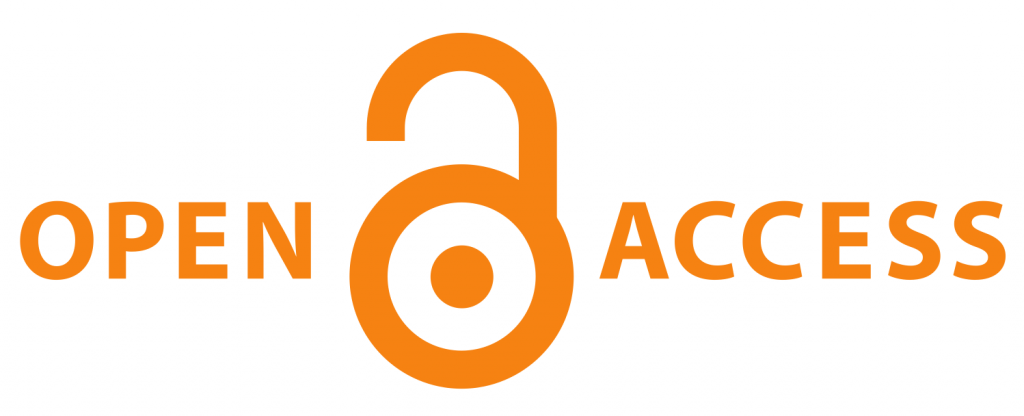Building Resilient TVET Institutions in Kenya amid the COVID-19 Pandemic
Abstract
A country's economy depends on the proportion of educated and skilled workers in the labour market. Technical Vocational Education and Training (TVET) prepares the youth to enter the labour market by developing skills, knowledge and attitudes. A 2015 study by the Organization for Economic Co-operation and Development (OECD) on labour market mismatch and labour productiveness reported that the industry could not find people with the right skills. Additionally, in a study by Dalberg in 2019, the respondent stated that it was difficult for youth to transition from education to employment as they lacked the skills and experience needed by employers. This situation has been exacerbated by the COVID-19 pandemic, which led to almost a yearlong closure of educational institutions in Kenya. This disruption affected over 2,000 TVET institutions and half a million youth. Unlike other forms of education, TVET heavily depends on practical training which was made impossible by their closures for about 10 months in 2020. This paper will explore the impact of COVID-19 on TVET training and the response mechanisms employed by TVET institutions both in the short term and in the long term. The study combined knowledge generated from a desktop literature review and primary data based on a random sample of 211 TVET institutions targeting 315 trainers and 644 trainees in all the 8 regions. Emerging evidence on the effect of this closure points to youth despair indicated by drug abuse, school dropout cases, and early pregnancies. The study recommends practical measures that will ensure continued learning even amid a pandemic. It further recommends implementing a hybrid model of training that emphasizes technology that will lessen the impact in the future.
Article Views and Downloands Counter
References
CAPYEI. (2020), Experience of COVID 19 report-on TVET learning. CAPYEI. https://capyei.org/wp- content/uploads/2020/11/EXPERIENCE-OF-COVID-19REPORT-on-TVET-LEARNING.pdf
Commonwealth of Learning. (2020). Strategies for blended TVET in response to COVID -19
FAWE. (2012). Strengthening gender research to improve girl and women’s education in Africa. http://www.fawe.org/Files/FAWE_Research_Series_Vol_II_English_-_Full_Version.pdf
ILO. (2021). Skills development in the time of COVID-19: Taking stock of the initial responses in technical and vocational education and training. Wcms_766557.pdf
ILO-World Bank. (2020) Skills development in the time of COVID 19: Taking stock of the initial responses in technical and vocational education and training. https://www.ilo.org/wcmsp5/groups/public/ed_emp/ifp_skills/documents/publication /wcms_766557.p
Kathula, D. N. (2020). Effect of Covid-19 Pandemic on the Education System in Kenya. Journal of Education, 3(6), 31-52. https://stratfordjournals.org/journals/index.php/journalofeducation/article/view/640
Kothari, C. R. (2004). Research methodology: Methods and techniques (2nd Ed.). New Delhi: New Age International limited.
Lin, J. (2012). Youth bulge: A demographic dividend or a demographic bomb in developing countries? http://blogs.worldbank.org/developmenttalk/ youth-bulge-a-demographicdividend-or-a-demographic-bomb-in-developing-countries
Majumdar, S., & Araiztegui, I. (2020). Technical vocational education and training: Reflections on the issues facing TVET and its potential in the time of COVID-19. https://drive.google.com/file/d/1jjdrtBHoE-UoOY56yRydbkITsnG-ra/view
Memedovic, O. (2004). Inserting local industries into global value chains and global production networks: Opportunities and challenges for upgrading. Vienna: United Nations Industrial Development Organization.
Ngware, M., et al. (2019). Building capabilities for work and life: Assessing the production of core values and capabilities among youth in TVET institutions in Kenya. African Population and Health Research Center, http://www.jstor.org/stable/resrep23861.
Saxena, K. (2020). Coronavirus accelerates pace of digital education in India . EDII Institutional Repository.
UNDP, (United Nations Development Programme). (2013). Kenya’s youth employment challenge. New York: UNDP
UNESCO-UNEVOC. (2013a). UNESCO-UNEVOC in brief. https://files.eric.ed.gov/fulltext/ED560499.pdf.
UNESCO-UNEVOC. (2020). UNESCO-UNEVOC international Centre virtual conference on skills for a resilient youth. https://unevoc.unesco.org/home/UNEVOC+Publications/lang Muniasamy,clouds from traditional learning: Higher educational systems in India Journal of Emerging Technologies in Le
V., Ejalani, I. M., & Anandhavalli, M. (2014). Moving towards virtual learning. Internationaarning (iJET), vol. 9, pp. 70-76, 2014.
Wiersma, W. & Jurs, S. (2009). Research methods in education: An introduction. MA: Pearson.
Copyright (c) 2022 Africa Journal of Technical and Vocational Education and Training

This work is licensed under a Creative Commons Attribution-NonCommercial-ShareAlike 4.0 International License.
Copyright Notice Copyright of published articles is held by AfriTVET. No limitation will be placed on the personal freedom of authors to copy or to use in subsequent work, material contained in their papers. Please contact the Publisher for clarification if you are unsure of the use of copyright material. Apart from fair dealing for the purposes of research and private study, or criticism and or review, this publication may only be reproduced, stored or transmitted, in any form or by any means, with the prior permission in writing of the Publishers.


